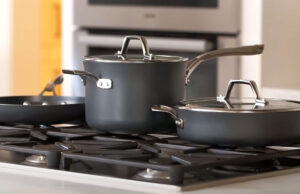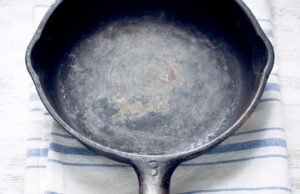As an Amazon Associate, I earn from qualifying purchases at no extra cost to you.
LG Dishwasher Not Drying Dishes? Why and Fix It Fast!
It’s really frustrating when your LG dishwasher finishes a cycle, but your dishes are still wet. Many people face this problem, and it’s often easy to fix. When your dishwasher stops drying well, a few simple checks can solve it quickly. You can restore perfect drying in no time.
Most of the time, it’s caused by simple things like wrong settings, overloading, or a faulty heating element. Always check your rinse aid level first, because it helps water slide off dishes easily. Also, make sure the “Heated Dry” option is turned on.
Cleaning the vent and using the right cycle can make a big difference too. By following some simple steps, your dishwasher can dry dishes perfectly again without needing a repair service.
Why Your LG Dishwasher Might Not Dry Properly
Check the Rinse Aid Dispenser
Rinse aid plays a big role in drying. It helps water slide off dishes faster, leaving them spotless and dry. Without enough rinse aid, water will stay on the dishes and form droplets. That means your dishes come out wet or streaky even after the full cycle.
Start by checking the rinse aid compartment. If it’s empty, fill it up with a good quality rinse aid. Many people forget this step, but it’s very important. Most LG dishwashers have a clear cap, so you can easily see when it needs refilling.
Next, make sure the dispenser door isn’t stuck. Sometimes, soap buildup or old rinse aid blocks the door from opening properly. If it looks dirty, wipe it with a damp cloth and mild cleaner. Avoid using sharp tools, as they might break the dispenser.
After that, run a normal cycle and check if the drying improves. You’ll likely see a big difference after adding rinse aid again. Clean, shiny, and dry dishes mean the system is working well.
- Always keep the rinse aid filled.
- Clean the dispenser regularly.
- Never use dish soap instead of rinse aid.
Choose the Right Drying Setting
Your LG dishwasher has different drying settings, and each affects how dry your dishes get. Some people accidentally turn off the “Heated Dry” option without noticing. This setting uses extra heat at the end of the cycle to remove moisture.
Open your dishwasher and check the control panel. Look for a button labeled “Heated Dry,” “Extra Dry,” or “Night Dry.” Make sure it’s turned on before starting your wash. If it’s off, the dishwasher will rely only on air drying, which isn’t very effective.
In addition, use the right wash cycle. Short or “Eco” cycles save energy but often skip heated drying. Try running the “Normal” or “Heavy” cycle instead for better results.
Also, keep the door slightly open after the cycle ends. This helps steam escape and prevents condensation from staying inside.
- Turn on the heated dry option.
- Avoid using short or eco cycles if you want dry dishes.
- Leave the door open after washing.
Load Dishes the Correct Way
The way you load dishes can affect how they dry. When dishes are stacked too close together, water gets trapped between them. This blocks airflow and stops heat from reaching every surface.
Start by giving each dish enough space. Avoid overloading the racks because crowded dishes take longer to dry. Place bowls and cups facing downward to let water drain easily. Always keep plastic containers on the top rack since they are sensitive to heat.
Also, don’t block the vent or fan area. These are usually found on the inside door panel. If big plates or pans block it, the moist air cannot escape, and everything stays damp.
Finally, make sure nothing covers the heating element at the bottom. Clean and open spaces help the warm air move freely around your dishes.
- Space dishes evenly.
- Don’t cover the vent area.
- Place plastic items on the top rack.
Inspect the Heating Element
The heating element is what makes your LG dishwasher dry your dishes. If it’s not working, no matter what settings you use, your dishes will stay wet.
You can find the heating element at the bottom of the dishwasher. It looks like a metal ring or coil. Before checking it, turn off the power and unplug the machine for safety. Then, inspect the coil carefully.
If you notice any visible damage, like cracks or burnt spots, it might need replacement. You can test it with a multimeter if you know how, or call a technician. It’s a simple part to replace, and it makes a big difference once fixed.
Sometimes, the element is fine but covered with scale or mineral buildup. In that case, run a cleaning cycle using vinegar to remove any residue.
- Unplug before inspection.
- Replace damaged heating elements.
- Run cleaning cycles to prevent buildup.
Clean the Filter and Drain Area
A clogged filter can trap moisture inside your dishwasher. When water cannot drain properly, dishes will remain wet and smell musty.
Remove the bottom rack and find the filter near the drain. Take it out and rinse it under warm water. Use a soft brush to remove food particles or grease. Make sure the drain area is clear of debris too.
After cleaning, place the filter back and run a rinse cycle. This helps confirm that the drainage system is working well. Regular cleaning once a week keeps drying performance strong and odor-free.
- Clean the filter weekly.
- Check for food buildup.
- Keep the drain clear.
Keep the Vent and Fan Clean
The vent and fan system help remove steam from inside the dishwasher. If these parts are blocked, moisture gets trapped, leaving dishes wet.
Locate the vent, usually on the inner side of the door. Clean it with a damp cloth to remove dust or residue. You can also use a soft brush for hard-to-reach spots.
If your LG model has a fan, make sure it’s spinning freely. Sometimes, dirt or small items can jam it. Clean gently and avoid using sharp tools.
You’ll notice a big difference once the vent and fan are working properly again. The drying cycle will become faster and more effective.
- Keep the vent area clear.
- Check the fan for free movement.
- Wipe the door area after each cycle.
| Problem | Common Cause | Simple Fix | Extra Tip |
|---|---|---|---|
| Dishes stay wet | Empty rinse aid | Fill rinse aid dispenser | Use a high-quality rinse aid |
| Spots or streaks | Hard water | Add rinse aid and vinegar rinse | Run a cleaning cycle monthly |
| Weak heat | Faulty heating element | Replace or repair | Unplug before checking |
| Moist air inside | Blocked vent | Clean the vent and fan | Leave the door open slightly |
| Water pooling | Clogged filter | Clean filter and drain | Do this weekly |
Understanding How LG Dishwashers Dry Dishes
LG dishwashers use two main methods to dry: heat drying and condensation drying. Heat drying uses a heating element to warm up air inside, while condensation drying uses hot water and cool air differences to remove moisture. Both can be effective when settings are correct.
Many people forget that using rinse aid supports both drying methods. It helps water sheet off surfaces rather than cling to them. Plastic dishes are harder to dry because they don’t hold heat well, so they often stay damp even when the rest are dry.
If your dishwasher model has a fan-assisted drying feature, use it. It improves airflow and shortens drying time. Also, don’t open the door right after the cycle ends. Wait 5–10 minutes so that steam can settle. This prevents water droplets from falling back onto dishes.
Keeping the interior clean, vents open, and settings correct ensures your LG dishwasher always dries properly. With care and small adjustments, you can say goodbye to wet dishes for good.
Importance of Rinse Aid in Dishwasher Drying
Rinse aid is not just for shine—it’s the secret behind dry dishes. It lowers the surface tension of water, making droplets roll off instead of sticking. Without it, you’ll notice water spots, streaks, and damp dishes.
Every time you refill the detergent, also check your rinse aid level. The compartment usually has an indicator showing when it’s low. Using it regularly helps improve both drying and cleaning results.
If you live in an area with hard water, rinse aid becomes even more essential. Minerals in hard water can stick to dishes and prevent complete drying. Rinse aid helps stop this by creating a smooth, slick surface.
When used properly, rinse aid can cut drying time by almost half. It’s a small step that makes a big difference in your dishwasher’s performance.
When to Call for Professional Help
Sometimes, the issue is not something you can fix at home. If your LG dishwasher still doesn’t dry even after checking all steps, it may have an internal fault.
A broken thermostat, fan motor, or electronic board can stop the heating process. These are parts that require tools and skills to repair. Calling a certified technician is the best choice in such cases.
You can also check if your dishwasher is under warranty. LG provides support and service for covered issues. Don’t attempt to open or fix the electronic parts yourself—it might void your warranty.
Professional help ensures the repair is safe and effective, keeping your dishwasher working for years to come.
Tips to Prevent Future Drying Problems
Prevention is always easier than repair. You can avoid drying issues by following a few habits. Always scrape food off dishes before loading them. This keeps filters cleaner and improves drying.
Use rinse aid regularly, clean filters weekly, and check the vent every month. Don’t overload the dishwasher, and choose the right drying cycle for your needs.
Also, try using a higher-quality detergent. Some detergents leave fewer residues, which helps water drain better. Regular maintenance keeps your dishwasher efficient and your dishes spotless.
Frequently Asked Questions (FAQs)
Is it normal for my LG dishwasher to leave some moisture?
Yes, a little moisture is normal, especially on plastic items. Plastic doesn’t hold heat like glass or metal, so it takes longer to dry. However, if most of your dishes are wet, then something is wrong. Always check the rinse aid, filter, and heating element. Leaving the door open slightly after the cycle also helps air circulate. This small step makes a big difference in drying performance.
Can I use vinegar instead of rinse aid?
Vinegar can help reduce spots, but it’s not a good long-term replacement for rinse aid. Rinse aid is specially designed to work with your dishwasher system. Vinegar can damage rubber parts or seals if used too often. If you use it, dilute it with water and don’t fill the rinse aid dispenser with it. Use proper rinse aid for best results.
Is it safe to open the dishwasher right after it finishes?
It’s better to wait a few minutes after the cycle ends. Opening it too soon releases steam and can cause condensation to fall back onto dishes. Waiting 5–10 minutes allows the heat and moisture to settle, improving drying results. After that, open the door slightly to let the steam escape completely.
Can overloading affect drying performance?
Yes, overloading is one of the most common reasons for poor drying. When dishes are packed too closely, hot air cannot move freely. This keeps moisture trapped between them. Always leave space between dishes and don’t block the vent area. You’ll notice your dishes dry faster and look cleaner when spaced correctly.
Is it okay to turn off the heated dry option?
You can, but dishes won’t dry completely. The heated dry function uses extra heat to remove moisture quickly. If energy savings are your priority, you can turn it off, but expect some dampness. Using rinse aid and opening the door afterward can help balance this out.
Can I fix a broken heating element myself?
It depends on your experience. If you’re comfortable working with electrical parts and have the right tools, you can replace it. However, if you’re unsure, it’s best to call a technician. They can check the part safely and ensure proper installation.
Do I need to clean the dishwasher vent regularly?
Yes, cleaning the vent is very important. The vent releases steam during the drying cycle. If it’s blocked, moisture stays inside, causing wet dishes and even mold. Wipe it every few weeks with a damp cloth to keep it clear.
Is it normal for older LG dishwashers to dry slower?
Yes, older models may take longer to dry because of wear on the heating element or weaker fans. Regular cleaning and rinse aid help improve results. If it’s still slow, consider a maintenance check to see if parts need replacement.
Final Thoughts
A dishwasher that doesn’t dry can be annoying, but fixing it is often simple. With the right care, cleaning, and settings, your LG dishwasher can work like new again. Take time to understand how it works, and you’ll enjoy spotless, dry dishes every time.




